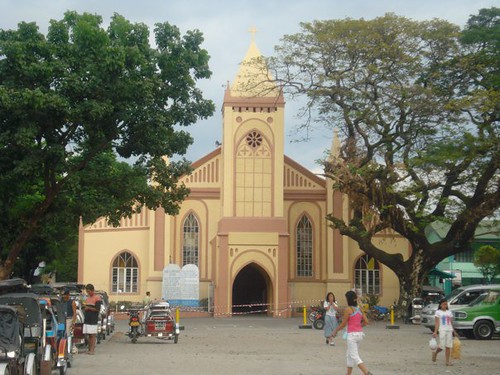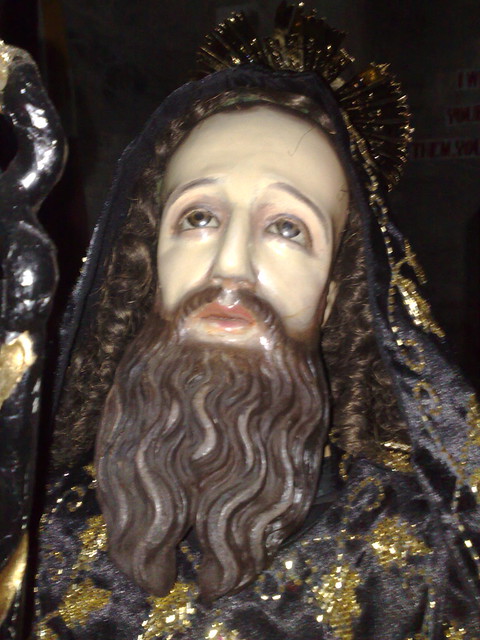CASTILLEJOS-SAN MARCELINO ARCH BORDER
EDUCATION


Ramon Magsaysay Technological University-San Marcelino Campus (RMTU-SM) formerly Western Luzon Agricultural College (WLAC) traces its beginnings as a farm school in 1927 with a handful of Grade VII pupils. Through the years, it metamorphosed into the Zambales Rural High School (ZRHS) which turned out its first batch of graduates in 1933
and then into the Zambales National Agricultural School (ZNAS) in 1962 when it started to offer the 2-year Associate in Agriculture program.

ST. WILLIAM SCHOOL
A Catholic high school was established in San Marcelino in 1946 by the Rev. Thomas Pacano, SVD who also served as School Director. Some Catholic lay people also helped, one of whom was the late Mr. Dalmacio Rodriguez who donated lumber for the school building. In 1949, the school was incorporated, given the name Southern Zambales High School and government recognition for the complete secondary course.
OTHERS
-SAN MARCELINO HIGH SCHOOL-
-SAN MARCELINO ELEM. SCHOOL-
-SAN GUILLERMO ELEM. SCHOOL
EVENTS
Anchored on the theme “Wow Singkamas! The Wonder of San Marcelino,” the town fiesta commenced on February 20 with a Misa ng Bayan in the morning and an opening program in the afternoon held at the Municipal Public Plaza.
Among the events included in the evening of the first day were Mr. Zambales 2011 Body Building Competition and Amateur Boxing Competition which drew the Marcileneans in excitement.
On February 21, the DepEd/RMTU Night was held in the Municipal Public Plaza which showcased talents in music and dance of elementary and high school students and teachers of DepEd and the Sining Folkloric Group of Ramon Magsaysay Technological University (RMTU).
Singkamas Fesitval is annually held at the town Plaza.
HEALTH

SAN MARCELINO DISTRICT HOSPITAL
It is funded by the public sector, by health organizations health insurance companies, or charities, including direct charitable donations. Before, this is funded by religious orders or charitable individuals and leaders. Today, hospitals are largely staffed by professional physicians, surgeons, and nurses.
FOOD


Singkamas or Native Turnip
It is the most abundant product in San Marcelino. The official Product of the town.

This a Philippine version of Food Trolley. This is a bicycle attached by a trolley. This trolley sells Fried Squidballs, Fishballs, Kikiam,and a street food called Kwekwek.
RELIGION

ST. WILLIAM CATHOLIC PARISH CHURCH
It is constructed probably during the american times, the st. william catholic parish church in san marcelino, zambales featured this center-sphire structure typical of amercan protestant churches. there is another church in the diocese of iba which features a similar design.
ST. WILLIAM OR SAN GUILLERMO -- PATRON OF THE TOWN
ANNUAL PROCESSION -- SAN GUILLERMO PROCESSION
HISTORY
Marcelinian civilization, according to old Municipal documents, started at the peak of the beautiful Vega Hill in the heart of an idyllic and luxuriant Zambales jungle during the pre-Hispanic settlers from the Ilocos Region led by the old Corpuses, Udans, Ragadios, Raguinis, Rabanes and Fabunans. With courage, hard work and perseverance, these Marcelinian forefathers harnessed the untouched wilderness of Vegal Hill and its immediate surroundings and slowly converted the area into a pulsating and vibrant community nurtured by the abundant natural yield of what was once an untamed wildlife.
They were governed by their obedience to their community elders.
When the Spaniards came, a kind-hearted Spanish friar, Father Guillermo, stayed at the Poblacion with the Marcelinian forefathers. In the succeeding years, more Spanish friars came, strengthening the stronghold of Christianity among the Ilocano settlers. The need for formalizing a political/administrative structure of the town also became evident as the population increased and the socio-economic life of the town became complex.
In the settlers' barangay of barrio, a middle-aged Teniente del Barrio, Marcelino Ora, was appointed. It was after him that the town was eventually named, long after he was gone. "San" was arbitrarily added to the name due to the people's religiosity.
When the barangay needed to choose a patron saint, the leaders chose the priest who Christianized the town, Father Guillermo. Ath the time the priest had already left San Marcelino, Like Marcelino Ora, the title of Saint was apparently just attachéd to his name.
It was after Marcelino Ora that the town was eventually named.
ETYMOLOGY
The town got its name after the first Capitan Municipal whose name was Marcelino. The people of this municipality during that time were fond of Saints, so they added "San" to the name Marcelino, thus making it San Marcelino. The first election was held on January 14, 1906 and Matias Apostol was the first elected President. San Marcelino was Christianized after the arrival of Father Guillermo and after his departure, the people rightfully chose San Guillermo as their town's patron saint.




Walang komento:
Mag-post ng isang Komento